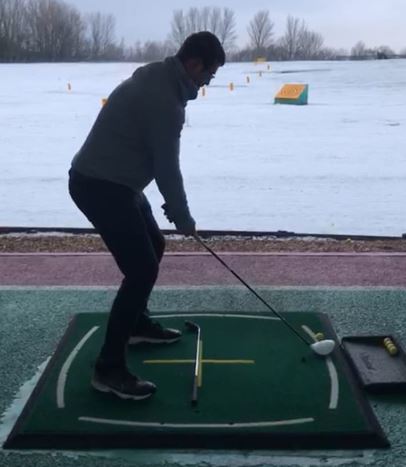Open Vs Closed Club Face In Golf – What Are They & What’s Better
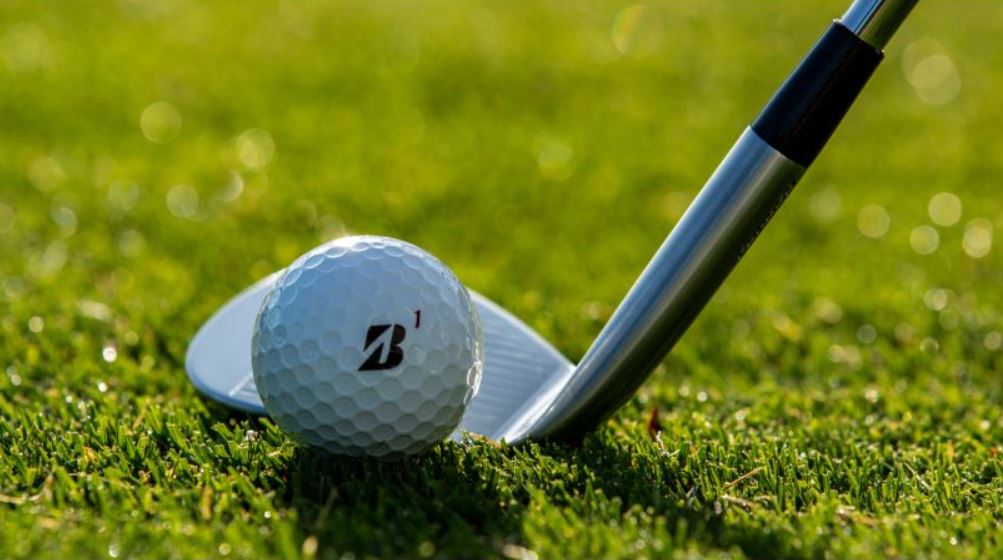
The position of your clubface at impact, relative to your swing path, is the dominant factor in determining your shot shape.
In this post, I highlight the differences between an open vs closed club face in golf. My intention is to teach when which setup is necessary and the impact it has on your shot.
Overview Of Open Vs Closed
Trackman explains that an open clubface at impact points to the right of the target if you are right-handed.
Conversely, a closed clubface aims to the left of your intended landing zone. When you strike the ball with an open clubface, this generates a fade or push. A closed clubface, on the other hand, draws your ball.
Characteristics A Open Club Face At Impact
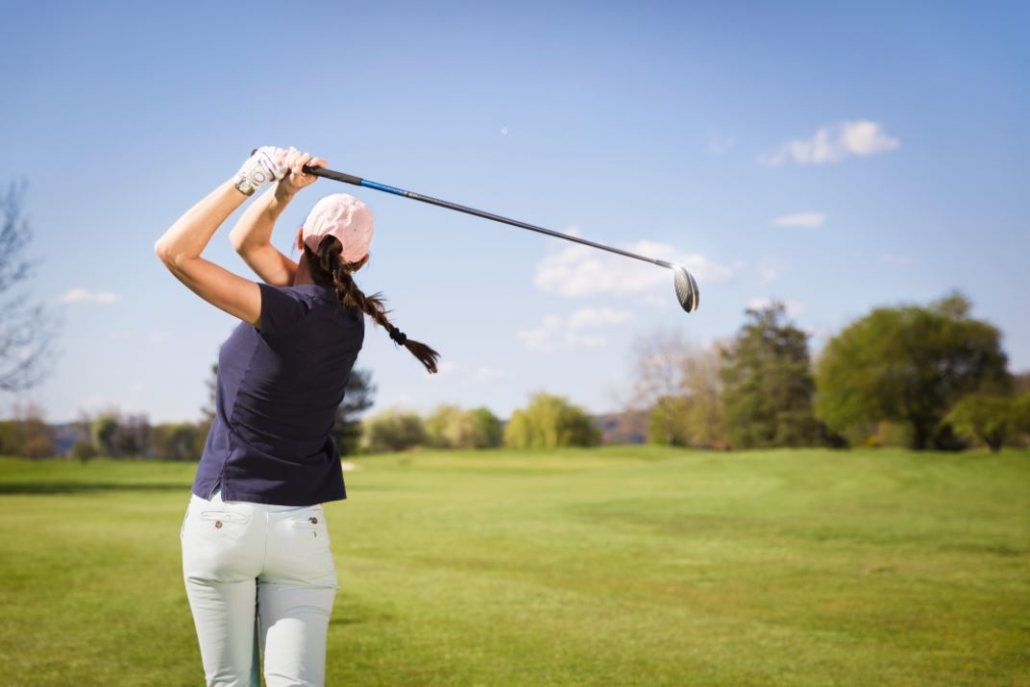
3 Selling Points
- It enables you to achieve a prime position on left-to-right doglegs
- Higher launch
- Ideal for golfers who play a fade
What Type Of Shots Does It Produce
When you deliver a controlled shot with an open face, it moves to the right following a fade flight. If you intend on hitting a fade, you should aim to the left of your target to compensate for the shape. Obviously, left-handers should do the opposite.
However, if you do not intend to hit a fade and aim at your target, the ball will curve away to the right of it.
On the occasion that your tempo and rhythm are off, an open face can cause you to slice or push your shots. A push occurs when you aim directly at your target, and the ball travels in a straight line to its right.
The results of a pushed shot are typically better than a slice. However, you will still find yourself well away from the target. A slice starts out straight and then violently snaps to the right, traveling in the opposite direction than intended.
Another issue with a slice is that it contains increased sidespin, which continues to impact the ball upon landing, which kicks it even further to the right than it already flew.
What Are The Benefits
Launch
An open clubface weakens the loft of your club and should produce a higher launching shot. This is helpful in circumstances where you are looking to reduce the roll of the golf ball and land it softly.
Consistency
Most golfers and coaches would prefer a gentle draw, but I cannot deny that I play my best golf with a controlled fade. It is not pretty, but I set up to the left of my target on every shot and work it back right, towards the target zone.
Knowing what the ball flight would be, enabled me to compensate for my alignment accordingly. It is a bad habit, but you can make it work for you. As long as you are prepared for the shape.
Dog Leg Holes
When you play a left to right dogleg or right to left for the lefties, you can use the open clubface to your own advantage. The ability to fade the ball around the corner and put yourself in optimal shape for your approach is invaluable.
Recovery Shots
Like on doglegs, a fade can help you escape trouble. If you land in the woods and have a tree in your way, you can employ a fade to work your ball around it to get back into play.
What Are The Disadvantages
Slices
The worst disadvantage of an open clubface is that it can cause you to slice your shot. That means that the ball curves uncontrollably right away from the target.
Inaccurate
When operating with an open clubface, you risk inaccurate results. If your tempo and rhythm are off, you can slice or push your shot, leaving you in trouble for your next strike. There is a fine line between executing a controlled fade and sending your ball wildly offline to the right.
High Winds
Since the added loft launches your ball higher, it can be problematic in high winds. The ball is pushed back, and you lose distance. If the wind is blowing from right to left, the fade shape may be neutralized, and your ball may finish further left of the target than you initially intended.
Who Will It Suit?
I caution amateurs against employing an open clubface permanently.
Instead, I suggest using it when you need to play a fade. This could be from left to right doglegs for the right-handers. You can also apply it when you need to shape your ball from right to left around a tree or object.
Characteristics A Close Club Face At Impact
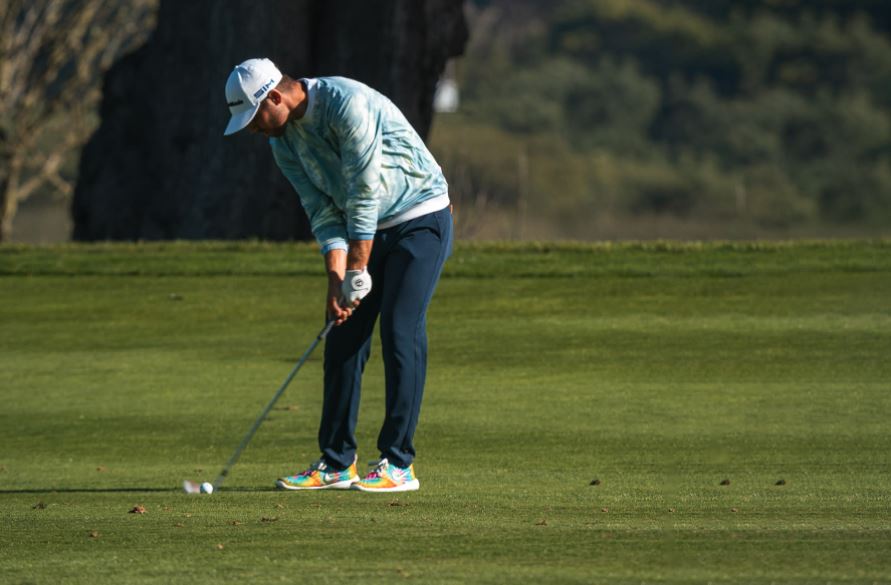
3 Selling Points
- Draw shape
- It improves your position on the right to left doglegs
- Lower loft
What Type Of Shots Does It Produce
A Closed club face produces two shots, a controlled draw or a hook.
A draw starts to the right for right-handers and shapes left towards the target. You can follow this video from Martin Hall to help you induce a consistent draw.
The other shot is the least desirable and more common for the average golfer. I am talking about the hook shot. In this scenario, a right-hander prompts their ball to snap violently to the left. Effectively you watch as your golf travels further sideways than it does forwards.
What Are The Benefits
Increased Compression
A closed face delofts your golf club, helping you to better compress the ball at impact and optimize your distance. As Rick Shiels highlights in this video. A closed club gets your face into position before contact. That guides you to strike down on the ball rather than hitting behind it and increasing your loft.
Dog Leg Holes
Opposite to an open clubface, a closed face thrives on the right to left doglegs for right-handers. The ability to hit a draw can shorten these holes and put you in an ideal spot for your approach shot.
Recovery Shots
Striking the ball with a closed clubface helps you work your ball from right to left as a right-hander. It is useful when there is an object in your line, and you have a direct shot to the green. A draw can help you escape trouble and give you a chance to get up and down.
Consistency
A closed clubface at impact has its problems. However, if you can find a way to make it work for you, you can enjoy superb consistency. You need to set up right of the target for every shot and allow for the shape to bring it back to the target.
What Are The Disadvantages
Hooks
If the rhythm is off, it can prompt your closed clubface to send your ball hooking deep into the left rough. Besides the inaccurate result, it also causes a loss of distance, as the ball travels further sideways than it does forwards.
Low Launch
Delofting your golf club can prompt a low flying ball, which is helpful in the wind or on a punch shot. However, if a player does not generate sufficient spin, the ball will achieve a low apex, costing you carry distance.
Who Will It Suit?
A closed clubface at impact is best suited to low and mid handicappers looking to deliver a consistent draw shot.
Characteristics A Square Club Face At Impact
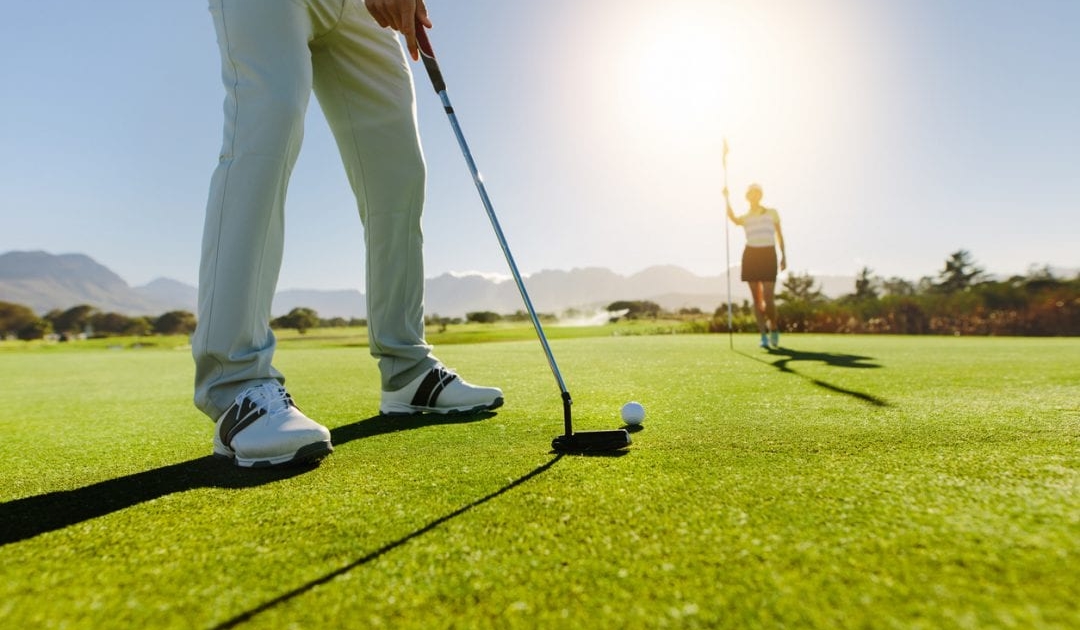
3 Selling Points
- Straight flight
- Accurate
- Increased distance
What Type Of Shots Does It Produce
A square clubface at impact delivers a straight shot to help amateurs boost their accuracy.
What Are The Benefits
Less Sidespin
A square clubface through impact increases the stability of the head and restricts any hook or slice sidespin. Therefore, it encourages straight ball flight to keep you on the fairway.
Accurate
As a result of straight ball flight, you enjoy added accuracy. Obviously, if you aim in the wrong direction, you stand no chance of an accurate result. However, when you are set up correctly and strike the ball with a square face, you should find yourself on the fairway.
Increased Distance
Trackman suggests that a golf ball with limited spin and curve travels further than a ball that draws or fades.
What Are The Disadvantages
No Shape
There are a few disadvantages to employing a square face at impact. However, in an event where you need to shape the ball around an object or dogleg, a square clubface is of no help.
Who Will It Suit?
A square clubface at impact is ideal for every amateur golfer. Hitting the ball straight and optimizing your accuracy is far better than an uncontrollable slice or a hook.
What Causes A Open Clubface At Impact
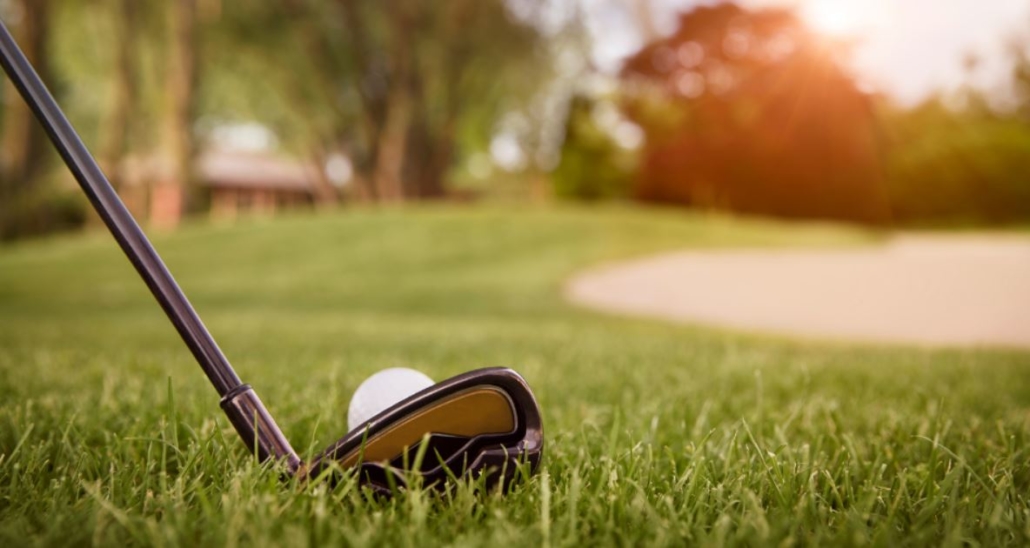
Your grip, posture, and swing path can lead to an open clubface through impact. A weak grip can keep the clubface open through the swing and prevent you from manipulating the position to square it up at impact.
Golf Magazine recommends placing the thumb of your bottom hand slightly across the grip rather than down. That will moderately strengthen your grip and increase your control over the club.
The next culprit of an open clubface is casting your golf club. Instead of keeping your arms in sync with your body, they fly on an outside path. That prompts you to cast your golf club. From there, it is challenging to square your face up at impact. Therefore, you leave it open.
Tips For Setting Up To Avoid Bad Shots
Alignment
Before you address the ball, pick out your desired target, and envision how you will execute the shot. If you intend to hit a straight shot, aim directly at your target. Conversely, should you wish to hit a draw or fade, you should aim to the right and left of the flag, respectively.
Players who align themselves incorrectly offer no chance of achieving an accurate shot.
Ball Position
Consider the club you are hitting and the shot you wish to play. When striking a driver off the tee, place the ball inside your lead heel to help you sweep it into the air. In addition, set the ball towards the front/center of your stance for fairway woods, hybrids, and long irons.
Position the ball in the center of your stance for mid-irons and marginally back for short irons. Place the ball towards your front foot if you wish to hit a fade. And conversely, set it down towards the back center of your stance to play a draw.
Grip
Ensure that you have control over the club before you commence your swing. If the club feels loose in your hand, your grip is likely too soft. You will need to strengthen it by crossing your thumb over the grip rather than downwards.
Should you feel your grip is too tight, move your thumb until it runs down the grip to loosen it.
Clubface At Address
Jack Nicklaus explains that golfers get their address wrong. They set the club up an inch behind the ball with a square face. If you get the club back to that position, it will close through impact. Therefore, you should approach the ball with an open clubface at this point.
Swing Path
Golfers that wish to hit a straight shot should attempt to achieve a neutral path. That means you take the clubhead back along a line and through. Should you intend to induce a draw, swing along an inside-out path to help close the face through impact.
Conversely, when you want to hit a fade, you take the clubhead back on an outside path and swing down on an inside line. This helps you open the face through impact to induce a face.
What Causes A Closed Clubface At Impact
As is the case with an open clubface, your grip, posture, and swing path impact the results. When your grip is too tight, it keeps the face closed at impact, causing a hook. Plus, an inside-out swing path encourages the face to close through impact.
Conclusion
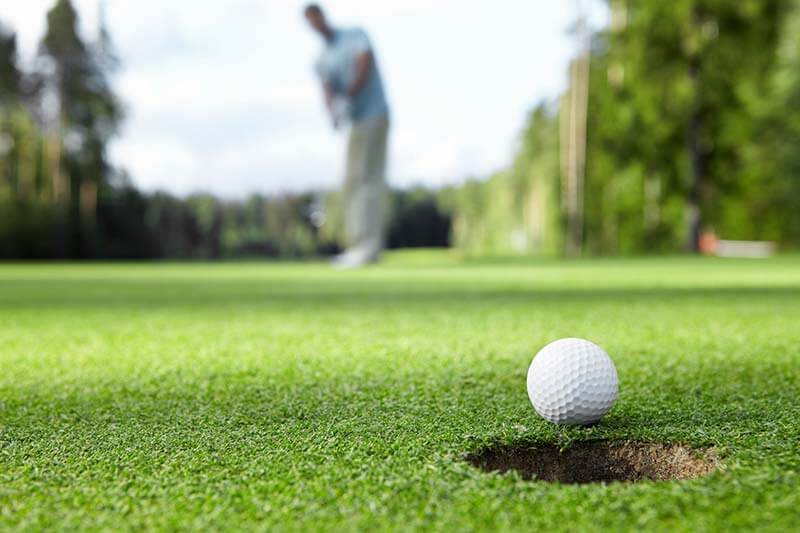
An open clubface through impact prompts a fade or slice. That means your ball travels from the left to the right if you are a right-hander. Conversely, a closed clubface sends your ball hooking or drawing. In other words, the ball shapes from right to left for right-handers.
Both shapes are ideal for dog leg holes or when you need to escape trouble. However, there is a fine line between precise execution and a disastrous result. Therefore, I suggest that the average golfer focuses on squaring their clubface at impact before employing the open or closed clubface technique.
As a result, between an open vs closed club face in golf, I would prefer you avoid both of these until you are able to control the shape.

